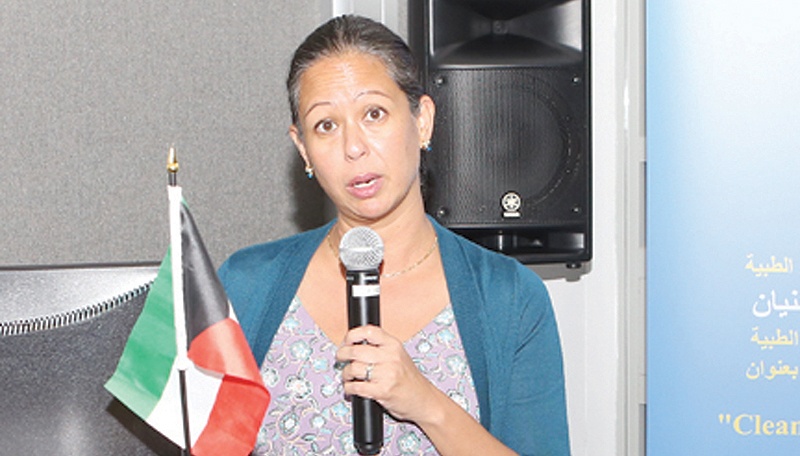Kuwait University center hosts 'Clean Air for Global Health' panel discussion

KUWAIT: "Air pollution is responsible for 10 percent of deaths in Kuwait," said Dr Sumi Mehta, a US Department of State speaker, during a panel discussion titled 'Clean Air for Global Health' held yesterday at Kuwait University's Health Sciences Center. She spoke about examples of pollution in the US in the past several decades. "In Kuwait, they have a better sense in reading and monitoring emissions and its sources. Providing information is one piece of this, but working together to accurately communicate risk is very important. We know there are solutions available but we should focus on the most effective ones," she added.
Prevention is always the best medicine. "In the short term, we can think of minimizing harm to individuals, but masks are not sustainable solutions for addressing the issue. For the longer term, more policy related solutions need to be developed and implemented. Journalists and other key influencers can also be helpful - this includes using data on pollution and its impacts. The data should be clear and easy to interpret. Open and accessible air pollution data provides multiple benefits," Mehta pointed out.

She also mentioned an example of communication that is confusing for the general public to interpret - reports about air quality shared by Kuwait's Environment Public Authority (EPA) and the US embassy website are different. Mehta advised joining the global network of health practitioners. "This allows a group of clinicians to work together for clean air policies, access data, receive news, engage in peer-to-peer contacts and participate in training and workshops," she concluded.
Dr Mufareh Al-Rashidi from the Kuwait Institute for Scientific Research (KISR) addressed a presentation on air pollution in Um Al-Haiman. "This area was rebuilt in 1991 and was renamed Ali Sabah Al-Salem. There are many industrial activities there including three refineries with high oil production, Burgan oilfield and a sewage station. It was panic for the people and the government," he stated.
"The study started in 2011 and we submitted the final report in 2014. During these three years, we studied this area and surrounding areas. It was our mandate as an institution and it was a part of our strategy. We collected 705 samples from 47 locations. We used three mobile laboratories to collect the data for 18 months," explained Rashidi.
The results of analyses of air quality in Ali Sabah Al-Salem done in eight years showed a decrease in pollution concentration in this area. "We insisted to shut down a cement factory in this area and the government did so as it was a source of pollution. Regarding inhalation, we found it is not a health problem." Rashidi concluded by mentioning recommendations. "These include stopping issuing licenses for new industrial activities in this area, do a complete emissions inventory, set a clear strategy for limitation of emissions and reduce emissions from cars through catalytic converters. We also need to move these industrial activities far from the residential area," he concluded.
By Nawara Fattahova
.jpg)
